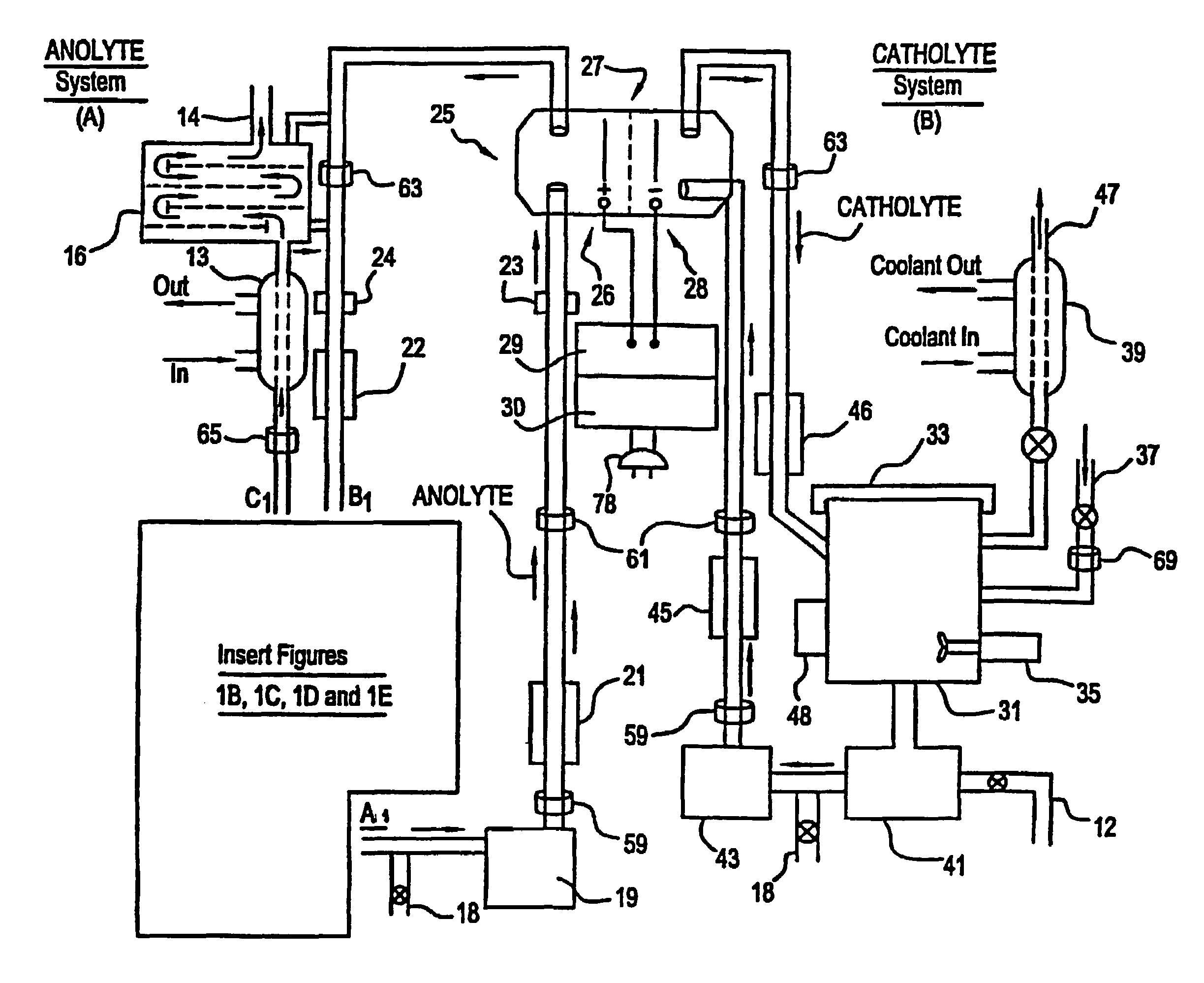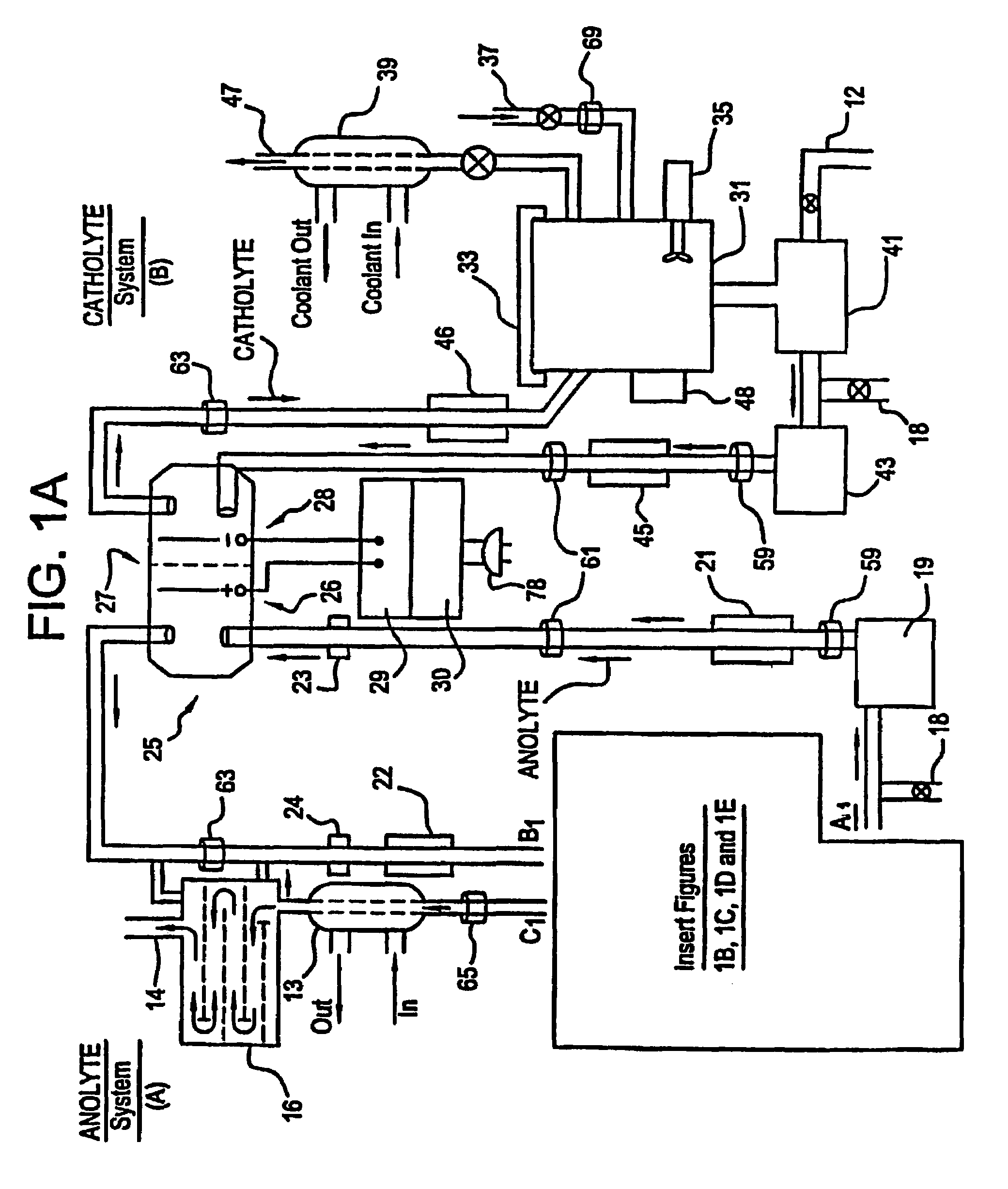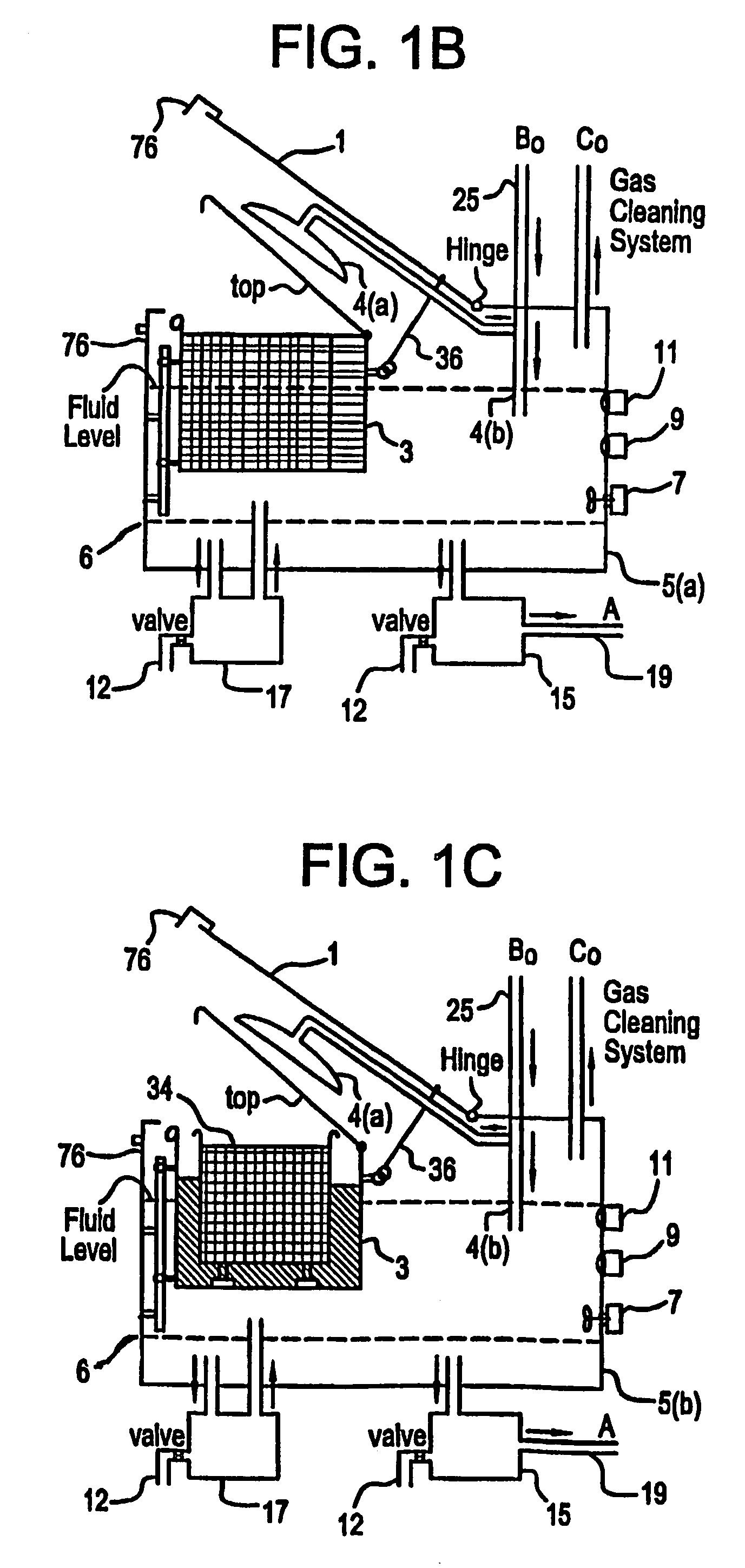Mediated electrochemical oxidation and destruction of sharps
a technology of electrochemical oxidation and destruction, applied in the direction of separation processes, applications, manufacturing tools, etc., can solve the problems of hazardous emissions, tens of millions of dollars in equipment required, etc., and achieve the effect of increasing the efficiency of the meo process
- Summary
- Abstract
- Description
- Claims
- Application Information
AI Technical Summary
Benefits of technology
Problems solved by technology
Method used
Image
Examples
examples
[0119]The following examples illustrate the application of the process and the apparatus.
Example (1)
Destruction of Biological Specimens
[0120]The MEO apparatus using the MEO process was tested using a number of whole small animals (dead mice). The MEO process was run at less then 100 watts for approximately an hour. The entire physical structure of the mouse was totally converted into a liquid. The liquid was tested using GC / FID analysis and did not show evidence of any hydrocarbons present. The detection limit for this analysis method (GC / FID) is approximately 1 to 10 ppm (parts per million). This result supports the conclusion that the contents of the liquid were sterilized and disinfected. The microorganism tests to determine the existence of microorganism will be completed following accepted protocols to substantiate the conclusion that the MEO process sterilizes and / or disinfects Sharps I and II.
Example (2)
Efficient and Environmentally Safe Products
[0121]The MEO process produces...
example
(8)
System By-Products are Safe
[0127]The system flexibility provides for the introduction of more then one mediator ion resulting in marked improvement in the efficiency of the electrolyte. Furthermore, it desensitizes the electrolyte to chlorine ions in solution (i.e. allows increased ease in preventing formation of unstable perchlorate compounds).
[0128]While the invention has been described with reference to specific embodiments, modifications and variations of the invention may be constructed without departing from the scope of the invention, which is defined in the following characteristics and features.
The invention provides the following new characteristics and features:
[0129]1. A process for treating and oxidizing Sharps I and sterilizing Sharps II and biological waste materials comprising disposing an electrolyte in an electrochemical cell, separating the electrolyte into an anolyte portion and a catholyte portion with an ion-selective membrane or semipermeable membrane apply...
PUM
| Property | Measurement | Unit |
|---|---|---|
| temperature | aaaaa | aaaaa |
| boiling temperature | aaaaa | aaaaa |
| diameter | aaaaa | aaaaa |
Abstract
Description
Claims
Application Information
 Login to View More
Login to View More - R&D
- Intellectual Property
- Life Sciences
- Materials
- Tech Scout
- Unparalleled Data Quality
- Higher Quality Content
- 60% Fewer Hallucinations
Browse by: Latest US Patents, China's latest patents, Technical Efficacy Thesaurus, Application Domain, Technology Topic, Popular Technical Reports.
© 2025 PatSnap. All rights reserved.Legal|Privacy policy|Modern Slavery Act Transparency Statement|Sitemap|About US| Contact US: help@patsnap.com



